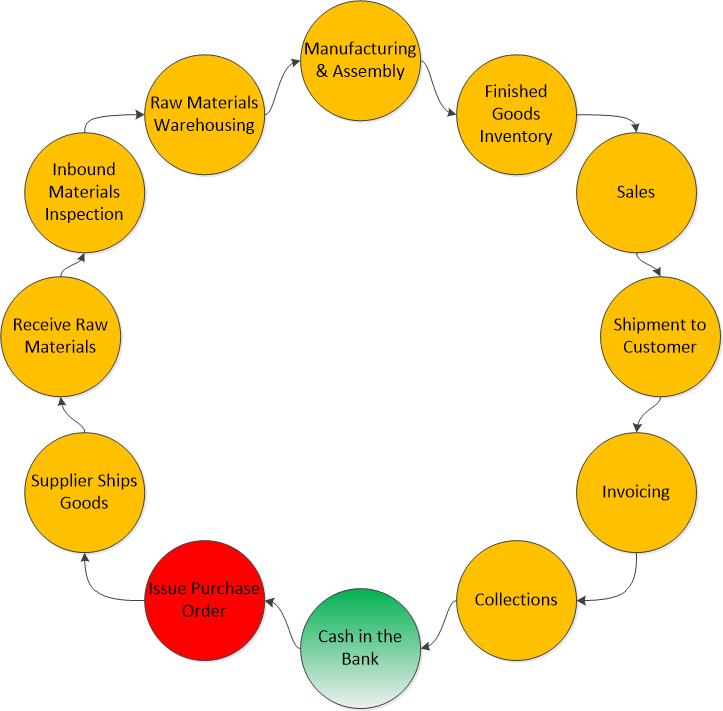There’s one thing of which your CFO should be more terrified than anything else. This thing is usually an apparently humble, harmless document, but your CFO knows that it can sink your company if it’s not managed right.
This document is the purchase order, affectionately known as the “PO.” The ubiquitous PO is provided to a vendor and is a commitment to purchase a good or service, under specific terms. Accordingly, the CFO should be thinking of this as a cash commitment, just like writing a check.
Mapping Your CFO’s Mind
If you were to map the mind of your CFO, what you might expect to find is an image of the business’s income statement. That income statement, of course, is the record of income and expenses and is the document that gets all the publicity in press releases, board meetings, and budget reviews.
What you would actually find, however, is a map focused on the result of all the activity shown on the income statement, which is the balance sheet, and more precisely, the cash balance. The picture of cash in their head would be surrounded by all the people who want some of that cash, including vendors, employees, governments, and so on, and it would also show the people who will be paying the business in cash.
This is a map of the cash-to-cash cycle:

This is a business’s cash cycle. With this, you can easily see that there is a very long and tortuous path for the cash to travel before it comes back to your CFO. This trip is filled with trouble at every stop, and the journey starts with the issuance of the purchase order.
The Cash Cycle – A Frightening Trip
With cash in the bank, your CFO has nearly limitless choices as to what they can do. They can invest back in the business in the form of expanded capacity; reward and promote employees with expanded benefits and raises; promote product through advertising; or buy inventory to sell to customers. Once they make any one of these choices, they have made the choice to not pursue any of the others. In fact, they must trust the choice that’s made and wait for the cash to return back to the bank. Sometimes, they need to wait a long time. Sometimes, the cash may never come home!
Speed is the CFO’s Friend
Envision the diagram above as a circular racetrack. The faster the cash leaves the bank and comes back, the sooner the CFO has an opportunity to make another choice. A high velocity of the cash-to-cash cycle is wonderfully comforting and liberating for your CFO. The more opportunities they have to turn cash back into cash, the more opportunities they have to make a return, and the more opportunities they have to make additional choices as to what to do.
Perils Along the Way
Look at the diagram above again, and imagine all the things that can go wrong. These things that can go wrong may either cost additional cash, or they may slow the speed down. Here are just some examples from the above diagram.
- Supplier Ships Goods. The supplier might ship the wrong goods, ship them late, or ship them to the wrong place.
- Receive Raw Materials. The employee receiving might mis-identify the goods, they might be damaged in transit, or they could get lost.
- Raw Materials Warehousing. The manufacturing plant may not need what’s on the shelves, the items spoil due to limited shelf life, or they are damaged by handling.
- Manufacturing & Assembly. Errors in process could result in the goods being damaged, the latest manufacturing process might not require the goods any longer, or the wrong product could be assigned to the manufacturing line.
- Finished Goods Inventory. Similar to the raw materials inventory, the goods could be mis-labeled, damaged during handling, or become obsolete due to age.
- Sales. The sales department might not be willing or able to sell the finished goods, or market conditions could change impacting the price that can be charged.
- Shipment to Customer. Again, similar to the inbound shipment of raw materials, the outbound shipment to the customer could results in mis-direction, mis-handling, or any other mistake.
- Invoicing. Once the product is shipped, the organization needs to get its invoicing right. Clerical errors, internal mis-communication, or problems in transmitting the document to the customer are all potential problems.
- Collections. The final step in getting cash back in the bank requires the customer to both agree and pay what is owed. For a variety of reasons, the customer might not be willing or able to pay.
Conclusion
With all these potential problems that could slow or prevent the return of cash back to the business, it’s a wonder that a PO ever gets issued at all! The cash-to-cash cycle is fraught with things that can go wrong, and as long as the CFO doesn’t release the PO, there is no risk of any of this happening. Of course, there’s no reward for having taken that risk, either!


Leave a comment